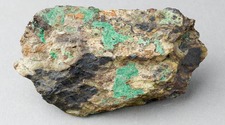
Uranium compounds are both chemically toxic and radioactive. Both of these properties have to be taken into account when managing exposures to uranium, both in the workplace, and the wider environment.
Quintessa and Mike Thorne and Associates staff have published a paper in the Journal of Radiological Protection in which the most recent information available on the chemical toxicity and biokinetics of uranium is used to propose new standards for limiting intakes of the element and its compounds.
The approach adopted allows coherent standards to be set for ingestion and inhalation of different chemical forms of the element by various age groups. It also allows coherent standards to be set for occupational and public exposures (including exposures of different age groups) and for various exposure regimes (including short-term and chronic exposures).
Having developed a set of proposed limits based solely on chemical toxicity considerations (which are significantly more restrictive than those adopted in the past), the radiological implications of exposure at those proposed limits are investigated for natural, depleted and enriched uranium. It is hoped that the analysis presented in this paper will serve as appropriate basis for future discussions on the setting of limits on occupational and public exposures to uranium both in the UK and elsewhere.
The work described in the paper is currently being considered by the IAEA, who are developing a new report on uranium in the environment.
Image: Uraninite (pitchblende) with torbernite from the collection of Martin Klaproth, Museum für Naturkunde, Berlin (http://www.naturkundemuseum-berlin.de/en/presse/hintergrundinfos/discovery-of-uranium/)